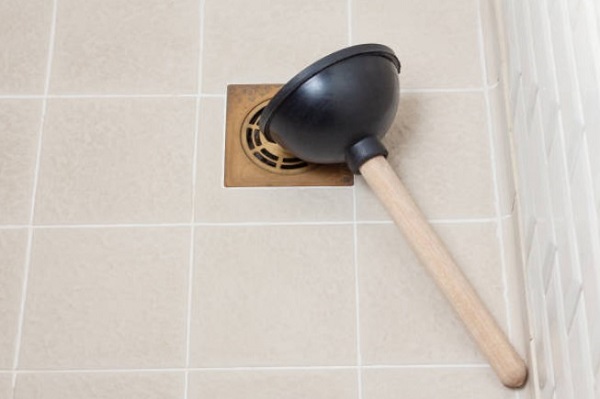Is your basement drain clogged and causing a watery mess?
If this feels like you, then it might be time to fix your basement drain clogs once and for all.
Doing this might seem more complicated than it looks, and you might wonder what to do. Should you hire a professional? Or will you be able to do it yourself?
Don’t worry. We have all the information you need to solve your backup drainage problem. Keep reading to get the inside scoop on your next steps.
Check for Debris Buildup
One of the first things you should do when dealing with a clogged basement drain is to inspect for debris buildup. Over time, dirt, leaves, and other grime can sneak into your gutter, leading to blockages.
Roll up your sleeves and wear gloves to tackle this issue. Remove the drain cover if you can, and take a look inside. If you spot any visible debris, try to scoop it out.
If you can’t reach everything, consider using a shop vacuum to help suck up the mess. This simple step might be all you need to get things flowing again.
Pour Hot Water
Sometimes, a clogged basement drain might be caused by a buildup of grease or soap scum that’s congealed within the pipes. It is where hot water comes to the rescue.
Boil a large pot of water and pour it down the drain. The hot water can help melt away and loosen the greasy gunk, allowing it to flow more quickly through the pipes.
After pouring the hot water, wait a few minutes to see if it has made any difference. You’re on the right track if the water starts draining more smoothly. But, if the water remains stagnant or drains slowly, you may need to repeat this step a couple of times to dissolve the blockage fully.
Use a Plunger
When hot water doesn’t quite do the trick, it’s time to grab a trusty plunger. Position the plunger over the drain, ensuring a good seal.
Start plunging by pushing and pulling vigorously. The aim here is to create suction that can dislodge the clog. Be persistent but not forceful, as excessive pressure might damage the pipes.
Your basement drain could flow freely again with some patience and elbow grease.

Baking Soda and Vinegar
Remember to underestimate the power of pantry staples when dealing with a pesky basement drain clog. Grab some baking soda and vinegar, and let’s get to work.
Start by pouring about half a cup of baking soda down the drain, followed by the same amount of vinegar. Quickly cover the drain to trap the fizzy reaction happening below. Let this dynamic duo work its magic for around 30 minutes.
Finish with a generous flush of hot water. This simple chemistry experiment can often break down the clog.
Snake It Out
If the baking soda and vinegar method doesn’t quite cut it, it’s time again to roll up your sleeves and employ a more hands-on tactic. Meet the plumbing snake or auger. This flexible and elongated tool is designed to reach deep into your plumbing and dislodge stubborn clogs.
Begin by inserting the snake into the drain and slowly turning the handle clockwise. This action helps to either break up or grip onto the clog. When you feel resistance, gently pull the snake out, ideally bringing the clog with it.
Dispose of the debris properly, and voilà – you’ve given your basement drain a breath of fresh air.
Chemical Drain Cleaners
When you’ve tried the DIY methods and the clog persists, some people turn to chemical drain cleaners. These products contain strong chemicals that can dissolve clogs but have some caveats.
Firstly, follow the manufacturer’s instructions carefully and use the recommended safety gear, such as gloves and eye protection. Secondly, these chemicals can harm your plumbing and the environment. They can corrode pipes over time, potentially leading to more significant problems.
Moreover, they might only work on some types of clogs. Chemical drain cleaners are best suited for minor blockages; if you have an older plumbing system, it’s advisable to avoid them altogether.
Call a Plumber
When all else fails, and your basement drain stubbornly refuses to cooperate, it’s time to call a plumber like Redline Plumbing LLC. These experts are well-versed in the intricate world of plumbing and can swiftly identify and resolve the issue.
A clogged basement drain might be more than meets the eye. It could indicate a deeper problem within your plumbing system, such as a blockage in the sewer line or a damaged pipe. Attempting to fix these complex issues without the proper knowledge and equipment can lead to more significant problems and costly repairs down the line.
By calling a plumber, you ensure that the root cause of the clog is addressed effectively and efficiently. They have the skills, experience, and specialized tools to diagnose and resolve even the trickiest plumbing problems. It will leave your basement dry and your worries behind.
Prevent Future Clogs
Now that you’ve successfully unclogged your drain problem let’s discuss prevention. To avoid this headache, consider installing a drain cover or strainer. These simple devices catch debris before it has a chance to enter your drain.
Regular cleaning and maintenance are also crucial. Keep your basement tidy and clear of potential clogged culprits like dirt, leaves, and hair. Be mindful of what goes down the drain; avoid pouring grease or tossing large food scraps.
Prevention is the best way to keep your basement drain clog-free.
Don’t Let a Basement Drain Clogged Ruin Your Day – Fix It Now!
In conclusion, a clogged basement drain can be a frustrating and messy problem to deal with. But by following the steps outlined in this article, you can effectively unclog it and prevent future issues. Remember to maintain your drain to avoid potential clogs regularly.
Don’t let a clogged basement drain cause further problems. Take action now and get your basement back to being functional. Try these solutions today and say goodbye to the basement drain clogged for good.




